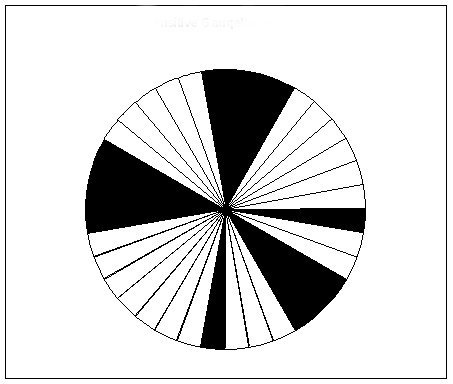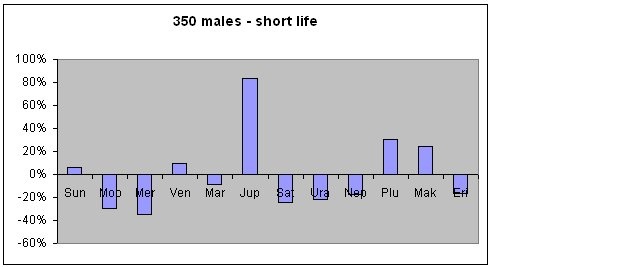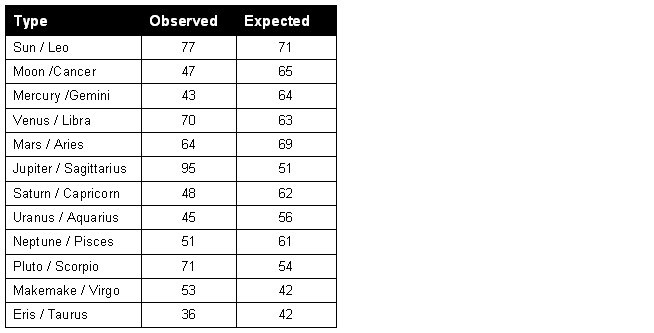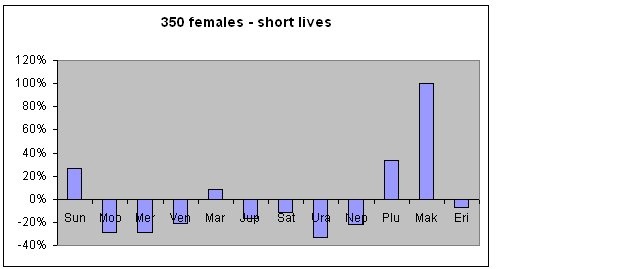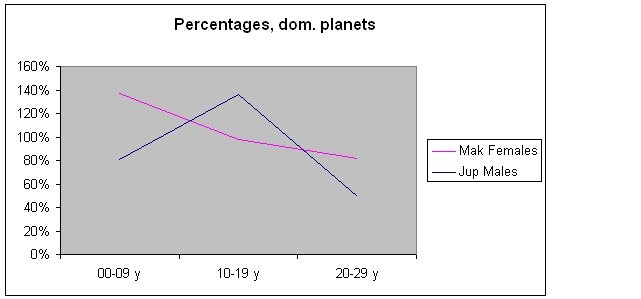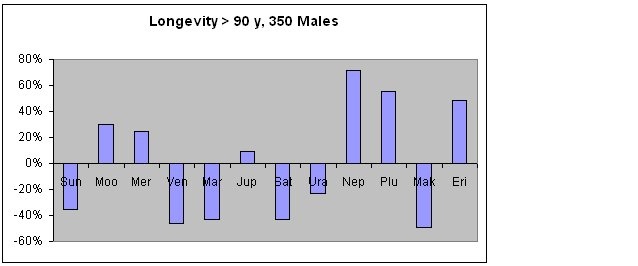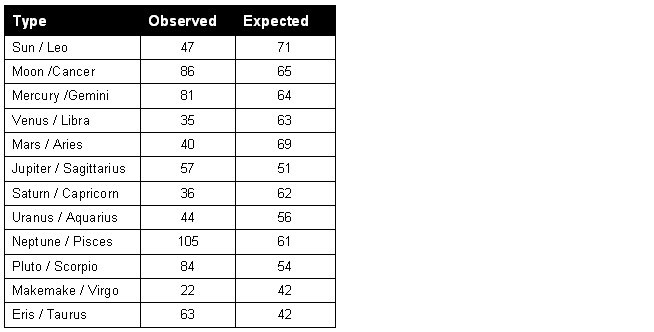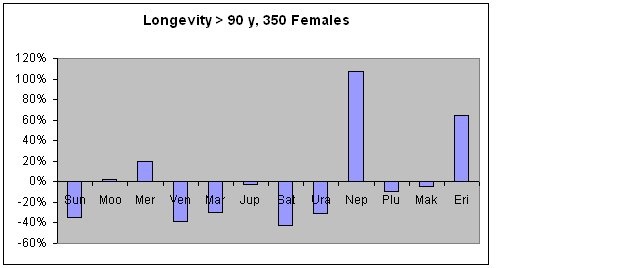The art of compressing a chart
A short and precise character description
When I have studied the Enneagram or Belbin’s typology I have been struck by the simplicity of these 2 rather succesful typologies. Both the Enneagram and Belbin’s typology consist of 9 types, which – just like the 12 signs in the Zodiac – have rather clear contours, so that one type cannot be confused with another.
In comparison to these 2 typologies the traditional astrological character description have several problems, which make it difficult to use in the same way as the 2 above mentioned typologies are used.
- Most astrologers admits that a description of a person’s sun sign isn’t sufficient to render a precise description of the person. Originally astrologers described a person by his or her rising sign – the ascendant – but an interpretation of the ascendant alone won’t do either.
- Some computerized chart interpretation systems delivers up to 50 pages, which seldom have any structure to indicate what is essential and what is peripherical. Such a report is useless. According to my tests the best of these so-called cookbook systems are 75% true and the length is 5-7 pages.
- For some unknown reason some professions are never mentionend in the astrological cookbook systems, for instance talents for music. Traditionel astrology simply don’t encompass all facets of life.
When I started to study astrology, I expected that an experienced astrologer would be able to produce a character description, which was short and precise. By ”short” I mean a report of maximum 3-4 pages, and by ”precise” I mean a report, where at least 90% of the statements were measurable true. I believe the customers, who consult an astrologer, expect the same.
The revelation
These thoughts had been troubling for for a long time, when I got a revelation. It happened on a Sunday, December 29th 2013. On that day Mercury and the Sun was making a conjunction, an influence, which according to astrology makes intelligence and creativity work together. I woke up in the morning and new exactly how to solve the problem – I mean: In a technical sort of way. I started the work immediately with a determination and confidence, I had been without for more than a year.
The idea is to compress a chart by determining which planet is the strongest. I use 12 planets, each ruling a sign. It’s a prerequisite in this model that a ruler and its sign expresses the same vibration, the same influence.:
- Aries + Mars
- Taurus + Eris
- Gemini + Mercury
- Cancer + Moon
- Leo + Sun
- Virgo + Makemake
- Libra + Venus
- Scorpio + Pluto
- Sagittarius + Jupiter
- Capricorn + Saturn
- Aquarius + Uranus
- Pisces + Neptune
Not all astrologers agree with me in this view. For instance, according to traditional astrologer, the mother figure is represented by the Moon and Cancer in the chart, and the father figure is represented by the Sun and Capricorn. In my opinion the Sun and Leo represents children and descendants, never the father.
In the compression model the factors depending on the birth time have more weight than the factors derived from the mere birth date Influences derived from the date alone (e.g. planetery positions in signs, including the Sun and the Moon) represent approximately 30%, while influences derived from the dato plus the time represent approximately 70%.
- A planet’s position in a sign gets 1 point to the sign’s ruler, no matter if it is the Sun or one of the outer planets.
- A planet in a Gauquelin sector in the diurnal circle gets 2 points.
- A planet gets 2.5 points, when it rules an axis like MC or ASC. If for instance the ASC is in Aries, Mars receives 2.5 points.
- A planet gets points, when it aspects one of the axes. A conjunction renders 2 points, oppositions and trines render 1.5 points, squares and sextiles render 1.3 points, noviles (40°, 80° and 160°), semisquare and sesquisquare render 1.2 points and finally the semisextile and the quinqunx render 1 point. The orbis for these aspects are the ones suggested by John Addey: 12° for the conjunction, 6° for the opposition, 4° for the trine, etc.
Finally there is a rather complex but rigidly logical system for the rulerships and elevations of the planets. Normally the planet with the highest number of points is the strongest. If for instance Mars has the highest number of points, then the person is a Mars-type – or what? Not necessarily. If Mars is in Pisces (= Neptune’s guest) and Neptune is the second-strongest planet, then Neptune comes out as the strongest planet, because Mars is a guest in Neptune's domain. If 2 planets are equally strong by points, then the planet, who has the strongest position in sign (e.g. in its own sign or exalted) is declared the strongest. If both planets are equally strong both by points and by position in sign, then the planet with the highest number of “guests” wins.
Now the system had to be tested with real charts. By “real” I mean charts, which had been rectified with the Heinrich Kündig rectification method. It is my experience as a practicing astrologer that the exact time is crucial.
In order to rectify a chart, I need information about prefereably 4-5 major events in that person’s life: What happened (a headline), where it happened (geographic location) and when it happened (a date). When I have found a pattern in the prognostic chart (it’s like forwarding a movie) I also know the exact time of birth. Rectificaiton is cumbersome and time-consuming. I can rectify 7-8 charts on a day, when I don’t have anything else to do. If I have to go to work, then I can rectify 2-3 charts per day.
Success!
If the people belonging to a particular type has a lot in common, then the typology works. Here are some examples:
- Two Danish male actors, Flemming Jensen and Tommy Kenter, both came out as Moon-types. Both are physically “chubby”, both are comedians, and both write their own texts.
- Giovanni Agnelli sr. is considered to be the founder of FIAT, the Italian car plant. He belongs to the Uranus-type. The same goes for Henry Ford II, who is manager of Ford, the American car plant, and who is the grandson of industrial tycoon Henry Ford.
- Male actor Viggo Mortensen is a Pluto- type, with Venus as the second strongest planet. The same goes for male actor Mads Mikkelsen. Both are considered to be male sex symbols according to imdb.com.
There are plenty of these “coincidences” so I am sure that the system for compressing a chart works.
Proof of concept
Once a chart is compressed, you can use it in statistics to prove astrology. According to Ptolemy the first thing an astrologer should do for a client, is to calculate how many years the client will live – because there is no reason to make prognostic charts beyond the death date(!)
At the present moment I have rectified 700 charts of people, who died before they reached the age of 30 years – 350 belonging to males and 350 belonging to females. The following 2 figures and 2 tables show the distribution of these “short lives” (where the strongest and the second strongest planet are included in the counting):
If you take the numbers from Table 2 and Table 3 and insert them into a Chi Square calculator, you will see that the results in both cases are outside the range of the Chi Square calcalutor (p is less than 0.0001) meaning that the probability of the result having occurred randomly is less than 1 out of 10,000. Both results are highly significant.
The conclusions derived from these numbers are as follows:
- Apparently a person’s longivity is determined already at birth – to some extent.
- Males with short lives tend to belong to the Jupiter-Sagittarius type.
- Females with short lives tend to belong to the Makemake-Virgo type.
- Further analysis shows that thes influences wanes in the twenties (see Figure 4, below).
It is difficult to continue to rectify charts of people with short lives, simply because I am running out of data.
Figure 4 shows that the Makemake effect seems to be strongest on the females, who die before reaching the age of 20 years, while the Jupiter effect seems to be strongest for the males, who die before reaching the age of 10 years.
After this exercise it is logical to take a look into the people, who live for a very ling time - like more than 90 years. At the present moment I have rectified 684 charts of people, who died after they reached the age of 90 years – 340 belonging to males and 344 belonging to females. The following 2 figures and 2 tables show the distribution of these “long lives” (where the strongest and the second strongest planet are included in the counting):
If you take the numbers from Table 4 and Table 5 and insert them into a Chi Square calculator, you will see that the results in both cases are outside the range of the Chi Square calcalutor (p is less than 0.0001) meaning that the probability of the result having occurred randomly is less than 1 out of 10,000. Both results are highly significant.
The conclusions derived from these numbers are as follows:
- Apparently a person’s longivity is determined already at birth – to some extent.
- Males with long lives belong to the following types: Neptune-Pisces, Pluto-Scorpio and Eris-Taurus. But if you want to focus on elements instead, the water element seems to be dominant among males with long lives.
- Females with long lives belong to the Neptune-Pisces type.
More details about this research has been provided here.
I will proceed to rectify charts of people with long lives to see, if the tendencies described above will hold, when the number of charts grows.
I have peaked into other groups like professions and found similar results:
- 611 male business managers (p < 0.0001)
- 338 female business managers (p < 0.0001)
- 369 (mainly male) military officers (p < 0.0001)
- 250 male solo athletes (p < 0.0001)
- 250 female solo athletes (p < 0.0001)
- 250 male actors (p = 0.0001)
- 659 female actresses (p < 0.0001)
- 346 female singers (p < 0.0001)
Skeptics and astrologers might criticize me for rectifying the charts – because when I rectify a chart, I manipulate it and thereby I might consciously or unconsciously make the data ”fit” into an expected pattern. There is only one answer to this (justified) criticism: To blind test the phenomena. In order to do that, I had to create a tool, which could take all the possible factors in a chart into account and use them to determine, if a certain chart belongs to particular group or not. For this purpose I have developed a neural network and baptized it AstroMate – see the following section.
AstroMate
In AstroMate a chart consists of 3 circles: The diurnal circle, the aspect circle and the Zodiac. In other words each planet is represented by a position in the diurnal circle, a position in the Zodiac and zero or more aspects to other planets or an axes. Every such number is dissolved in 180 harmonics (ref. John Addey’s ”Harmonics in Astrology”). This means that every position is represented with a 1 degree precision. As a result AstroMate transforms a chart into a long string of numbers – just like a DNA string.
AstroMate can then compare an input string with other similar strings from other charts and get an idea about to which degree two charts are similar. Provided I have a sufficiently large number of charts for a given group I will be able to determine if the input chart belongs to that group. I will probably need 400-600 charts belonging to the group of male (or female) short lives in order to determine if the input chart belongs to a person with a short life. The same operation can be done with professions – or any other category.
In the long run – with many categories – I will be able to make a very precise description of a person based on his or her rectified chart. If I succeed I will have managed to do the following things:
- I will have proven astrology beyond doubt.
- I will have proven that it is possible to make a precise character description based on a chart.
- I will have proven that it is possible to predict events based on a chart.
- I will have proven that the Heinrich Kündig rectification method actually works.
Of course there is still a lot of work to be done, before these visions are realized in their full extent. But I hope that I have been able to demonstrate that astrological research is not rocket science – instead it is merely hard work.
Copyright Eskild Rasmussen - Last updated September 22nd 2016.
